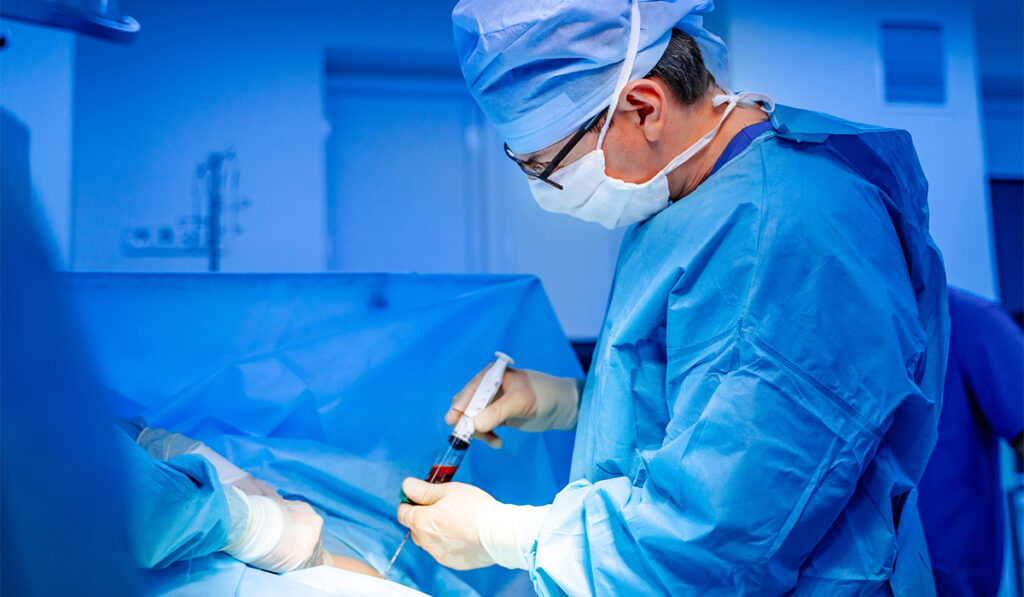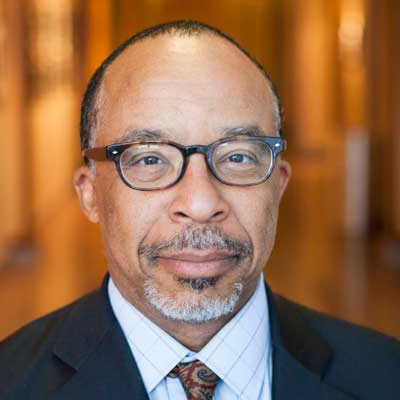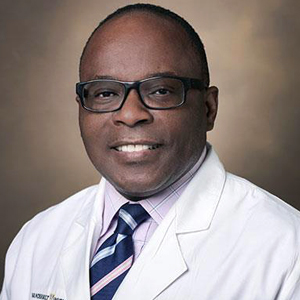Thanks in part to a consortium organized by Vanderbilt University Medical Center’s Michael Rutledge DeBaun, M.D., MPH, children and adults with sickle cell disease (SCD) will have a new, improved standard of care for cure.
SCD is an inherited blood disorder that causes the body to produce abnormal hemoglobin. The disease causes oxygen-carrying red blood cells to become hard, sticky, and sickle-shaped, which makes it difficult for them to move through small blood vessels. This can lead to pain, infection, organ damage, low blood count, and stroke, and other serious health problems.
With bone marrow transplant (BMT) as the only potential cure, the average life expectancy for someone with SCD is 48 years. Medications and blood transfusion are used to prevent and treat pain and reduce the risk of infection and stroke. Heart, lung, and kidney complications account for about half of the causes of death.
Best Transplant Option
Patients selected for a BMT have been put through a conditioning phase in which they are given chemotherapy or radiation to suppress the immune system so the new cells can engraft. Of course, traditional chemotherapy and radiation can cause severe side effects.
However, a type of bone marrow transplant regimen known as nonmyeloablative haplo-identical uses significantly lower doses of chemotherapy and radiation compared to a standard BMT procedure. The treatment suppresses the patient’s immune system enough to allow donor stem cells to engraft, while minimizing the severe side effects associated with high-dose myeloablative therapy.
“We believe that nonmyeloablative haplo-identical BMT is now the most viable option for acute therapy in adults with SCD, providing an opportunity to those patients who previously had no options,” said DeBaun, director of the Vanderbilt-Meharry Sickle Cell Center of Excellence. “It provides less toxic chemotherapy and is readily available at Vanderbilt and major medical centers.”
The Vanderbilt adult transplant team, led by Adetola Kassim, M.D., director of the adult sickle cell disease program, performs about one to two bone marrow transplants per month. For most adults, the team uses nonmyeloablative therapy during conditioning.
“Nonmyeloablative therapy is tolerable for adults with SCD, about 90 percent of whom have a matched bone marrow donor,” DeBaun said.
BMT vs. Gene Therapy
In a 2024 article in Blood, DeBaun and Kassim compare nonmyeloablative BMT with newly FDA-approved gene therapy treatments for SCD.
Gene therapy requires myeloablative therapy, which is too toxic for most adults because of pre-existing heart, lung, and kidney disease. About 60 percent of adult SCD patients have at least one major organ dysfunction and one-quarter have dysfunction in two or three organs.
Results from nonmyeloablative BMT are just as good if not better than gene therapy, the researchers said.
“We have a 95 percent overall survival rate and two-year survival,” DeBaun said. The reported success rate for gene therapy for SCD is 93.5 percent.
A just-published study in NEJM Evidence confirms these results. The phase 2 study was conducted by Kassim and DeBaun at VUMC and 18 other U.S. centers between 2017 and 2021. The researchers found that 42 SCD patients who underwent nonmyeloablative haplo-identical BMT had a 95 percent rate for two-year survival, and more than 97 percent of patients no longer required immunosuppressive therapy by one year after the transplant.
The new trial published in the New England Journal of Medicine Evidence “is a direct extension and validation of our previous study,” DeBaun said.
Not only is nonmyeloablative BMT as effective as FDA gene editing or gene therapy, it’s also one-fifth the cost, coming in at $200,000 to $400,000 per procedure versus $2 million to $3 million for the gene-based procedures.
However, using donor stem cells in nonmyeloablative BMT carries a risk of graft-versus-host disease (GvHD), while gene therapy uses a patient’s own modified cells and largely avoids this risk. Both treatments may cause nausea, fatigue, mouth sores, and a lowered immune system, with potential long-term concerns such as infertility due to chemotherapy treatments.
Myeloablative BMT also may cause GvHD and other toxicities, including the risk of infection and death.
Consortium Success
In 2012, DeBaun organized the Vanderbilt Global Haplo-identical Learning Collaborative for Cure, a consortium of clinical educators at 22 sites in 10 countries around the world.
“Doctors who were not funded to do this work came together weekly to improve the management of SCD,” DeBaun said. “It took 10 years to enroll enough patients for our protocol and follow their outcomes for a minimum of two years, and report outcomes. Our decade-long effort led to a change in the standard of care for adults with SCD.”
“Our decade-long effort led to a change in the standard of care for adults with SCD.”
Vanderbilt is at the epicenter of curative therapy for adults with SCD. “We have an international reputation and an outstanding record of outcomes with our transplant team,” DeBaun said. “We filled a gap in knowledge and showed how to successfully treat adults with SCD. It’s less expensive than gene therapy and a safer, more widely available option than the traditional matched-donor approach.”





